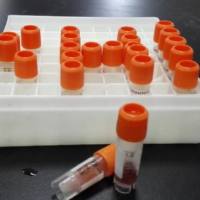Live-Cell Imaging Combined with Immunofluorescence, RNA, or DNA FISH to Study the Nuclear Dynamics and Expression of the X-Inactivation Center
互联网
676
Differentiation of embryonic stem cells is accompanied by changes of gene expression and chromatin and chromosome dynamics. One of the most impressive examples for these changes is inactivation of one of the two X chromosomes occurring upon differentiation of mouse female embryonic stem cells. With a few exceptions, these events have been mainly studied in fixed cells. In order to better understand the dynamics, kinetics, and order of events during differentiation, one needs to employ live-cell imaging techniques. Here, we describe a combination of live-cell imaging with techniques that can be used in fixed cells (e.g., RNA FISH) to correlate locus dynamics or subnuclear localization with, e.g., gene expression. To study locus dynamics in female ES cells, we generated cell lines containing TetO arrays in the X-inactivation center, the locus on the X chromosome regulating X-inactivation, which can be visualized upon expression of TetR fused to fluorescent proteins. We will use this system to elaborate on how to generate ES cell lines for live-cell imaging of locus dynamics, how to culture ES cells prior to live-cell imaging, and to describe typical live-cell imaging conditions for ES cells using different microscopes. Furthermore, we will explain how RNA, DNA FISH, or immunofluorescence can be applied following live-cell imaging to correlate gene expression with locus dynamics.









